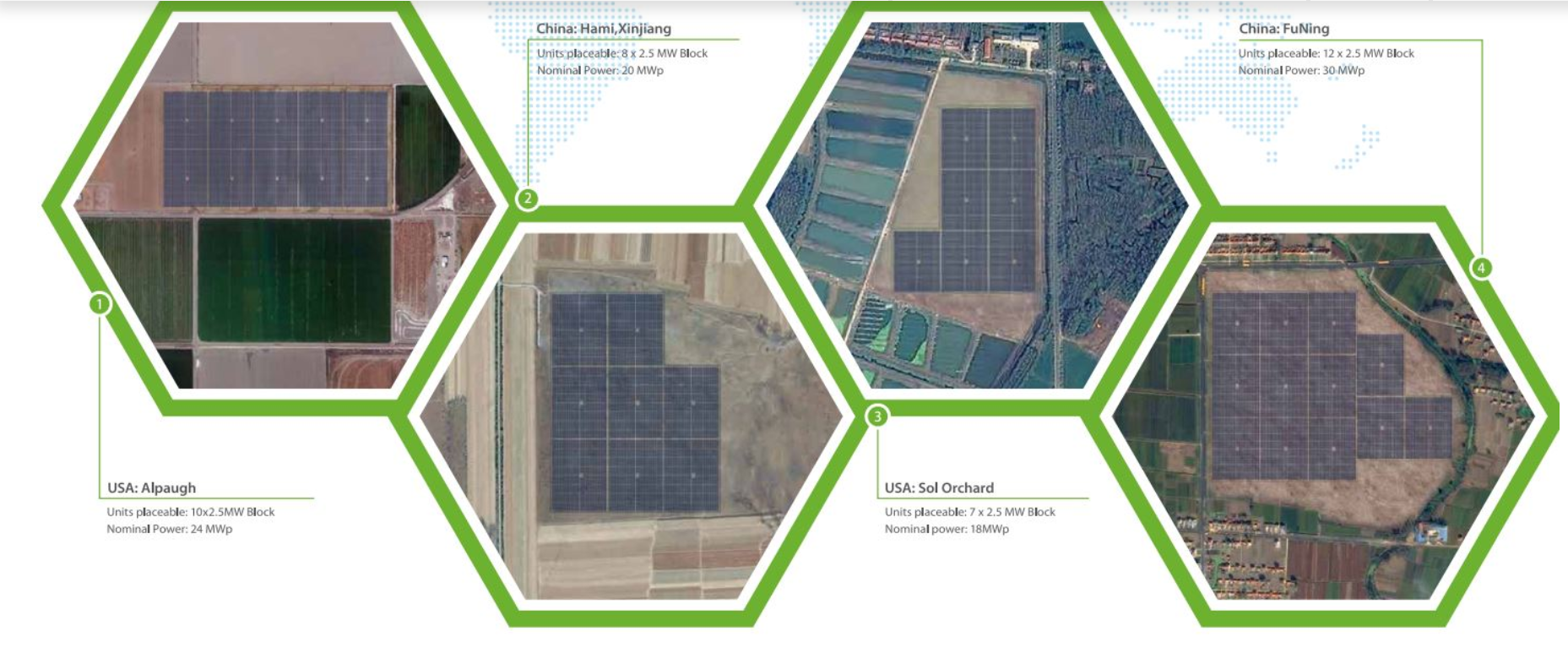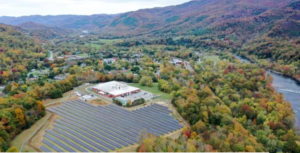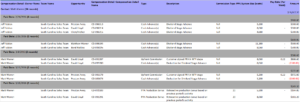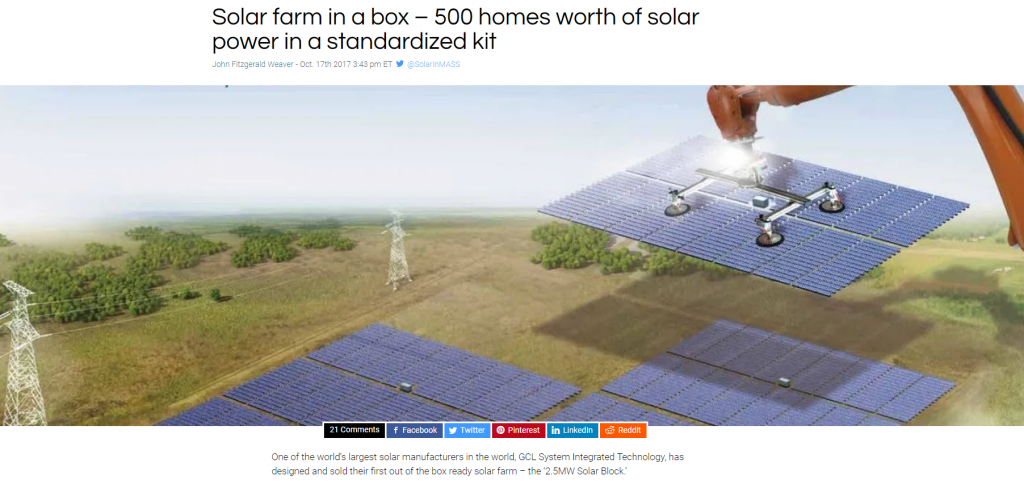
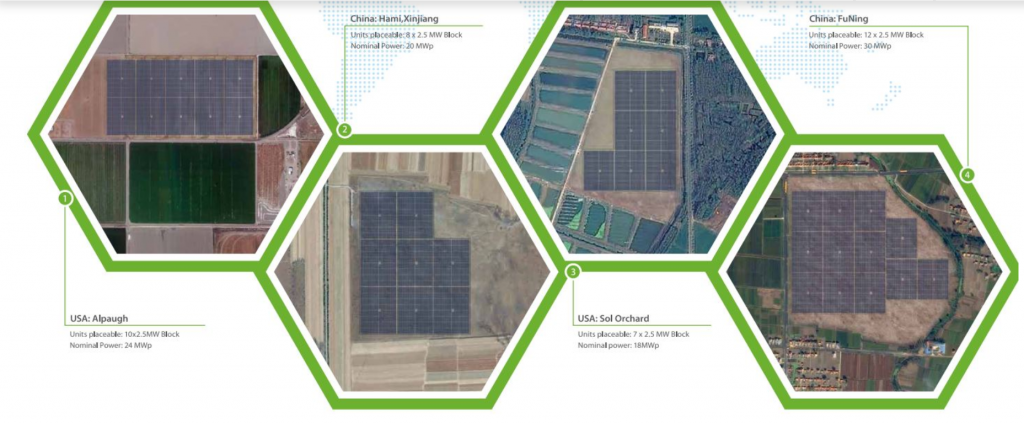
The documentation suggest 289kW/acre – about 8.6 acres for the total 2.5MW installation.
Their goal in designing the Solar Block is to lower the cost and speed the deployment of utility-scale solar power. The units can be daisy chained into larger plants.
The hardware is specified with either a fixed or a single axis tracker system, 96 cell 415-430W 16% efficient solar panels (pdf), two 1,000kW inverters in a single shipping container, all the wiring needed plus – as added options – a full range of O&M services. In the ‘optimized’ Super 2.5MW Solar Block, single axis tracking and 425W solar panels are specified. The documentation specifies that an output gain of 10-30%, depending on location, is expected over the single axis tracking system.
Their marketing information pushes very hard the standardization – the image below showing perfect 2.5MW squares of solar laid across potential areas and the header image being a robot moving a full farm much like a solar panel would be.
The hardware for a kit like this should be in the 50-60¢/W range – so a 2.5MW system should cost around $1.25-1.6M total. Somewhere in the range of 13-16 shipping containers of hardware. ~10 of those containers being solar panels, a few being the single axis trackers and one of them being the inverter. Not a small setup, real construction crews needed…but most engineering done, pricing standardized, package delivery, big brand name…hrmm.
I’ve read reports that say small (less than 20MW) and local solar power plants are the healthiest for balancing out cost savings for scale, and offering localized power grid savings. These projects fit right in that niche.
Solar Kits and Generators are a hot topic on a regular basis – let alone when hurricanes hit and makes headlines. A kit like this, delivered in an emergency situation, with a few shipping containers of batteries could power a few thousand homes. I’m betting someone at the strategic offices of the various military groups have looked at setups like this in the past.
